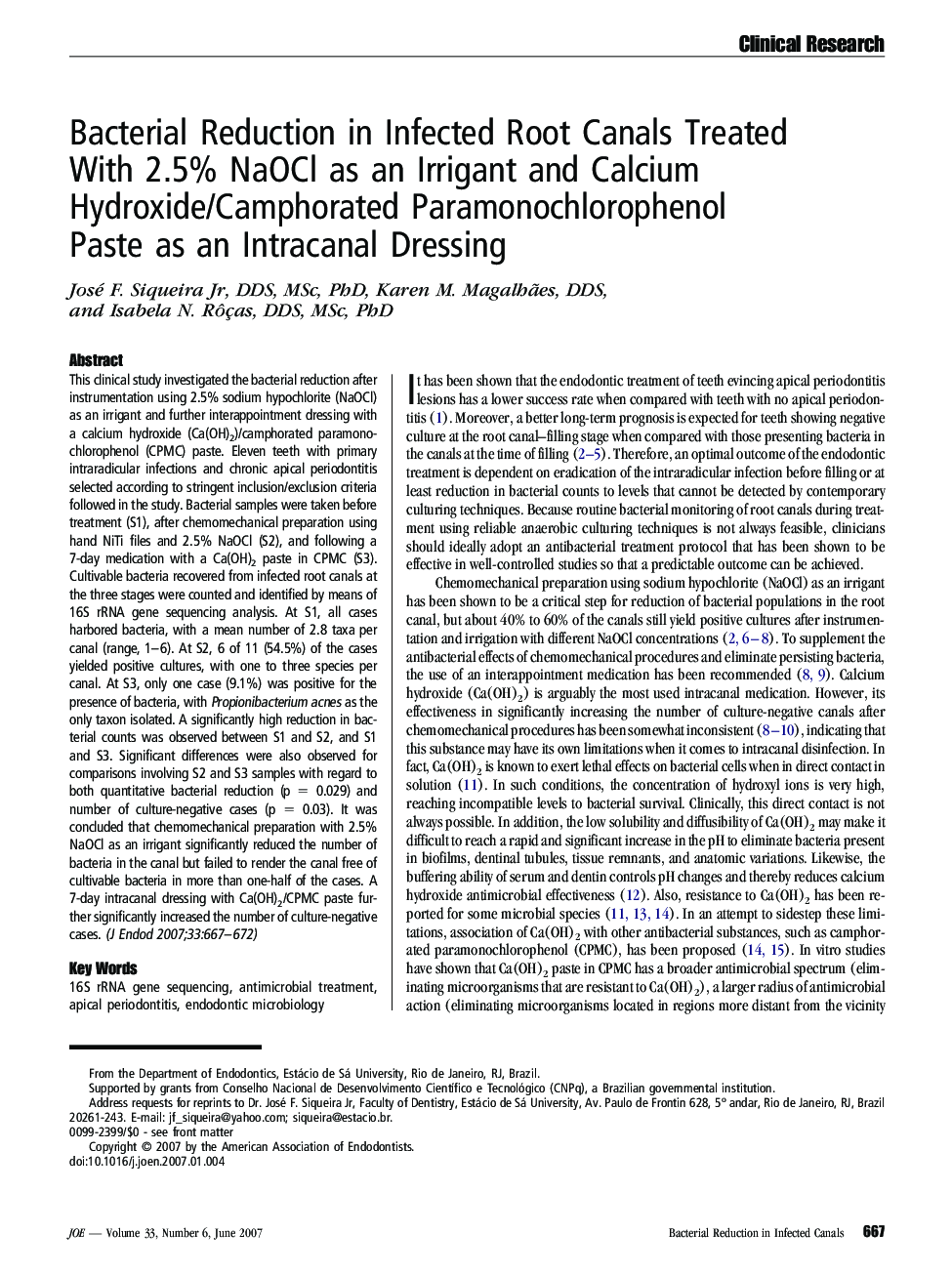| Article ID | Journal | Published Year | Pages | File Type |
|---|---|---|---|---|
| 3149081 | Journal of Endodontics | 2007 | 6 Pages |
This clinical study investigated the bacterial reduction after instrumentation using 2.5% sodium hypochlorite (NaOCl) as an irrigant and further interappointment dressing with a calcium hydroxide (Ca(OH)2)/camphorated paramonochlorophenol (CPMC) paste. Eleven teeth with primary intraradicular infections and chronic apical periodontitis selected according to stringent inclusion/exclusion criteria followed in the study. Bacterial samples were taken before treatment (S1), after chemomechanical preparation using hand NiTi files and 2.5% NaOCl (S2), and following a 7-day medication with a Ca(OH)2 paste in CPMC (S3). Cultivable bacteria recovered from infected root canals at the three stages were counted and identified by means of 16S rRNA gene sequencing analysis. At S1, all cases harbored bacteria, with a mean number of 2.8 taxa per canal (range, 1–6). At S2, 6 of 11 (54.5%) of the cases yielded positive cultures, with one to three species per canal. At S3, only one case (9.1%) was positive for the presence of bacteria, with Propionibacterium acnes as the only taxon isolated. A significantly high reduction in bacterial counts was observed between S1 and S2, and S1 and S3. Significant differences were also observed for comparisons involving S2 and S3 samples with regard to both quantitative bacterial reduction (p = 0.029) and number of culture-negative cases (p = 0.03). It was concluded that chemomechanical preparation with 2.5% NaOCl as an irrigant significantly reduced the number of bacteria in the canal but failed to render the canal free of cultivable bacteria in more than one-half of the cases. A 7-day intracanal dressing with Ca(OH)2/CPMC paste further significantly increased the number of culture-negative cases.
